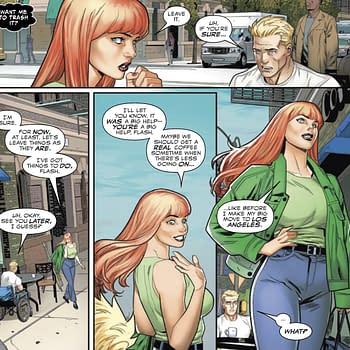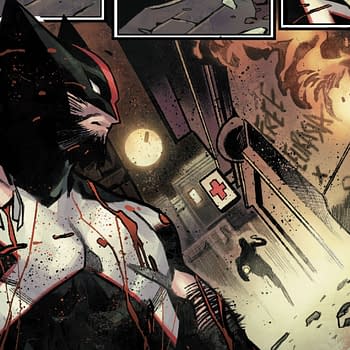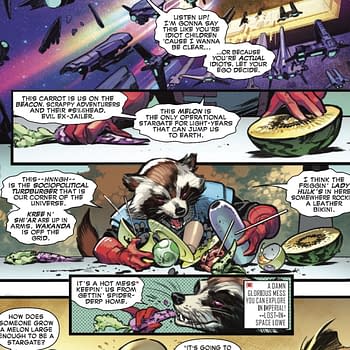Posted in: Comics, Heritage Sponsored, Vintage Paper | Tagged: flash, Flash Comics, gardner fox
Flash Comics #104, Heavy Water, and Uranium 235
Within a period of a few months between mid-1948 and early 1949, DC Comics updated and expanded the origins of three of its most important characters — Batman, Superman, and the Flash. Batman #47 and Superman #53 expand the original origins of these characters with significant new detail. Both of these comics are highly sought after by collectors for that reason. Flash Comics #104 is well-regarded as well, but is mainly known for a very different reason: it's the last issue of the title. The series was rebooted with #105 in the Silver Age, a decade after #104. There's a copy of Flash Comics #104 up for auction in this week's 2020 September 10 – 13 Comics & Comic Art Signature Auction.
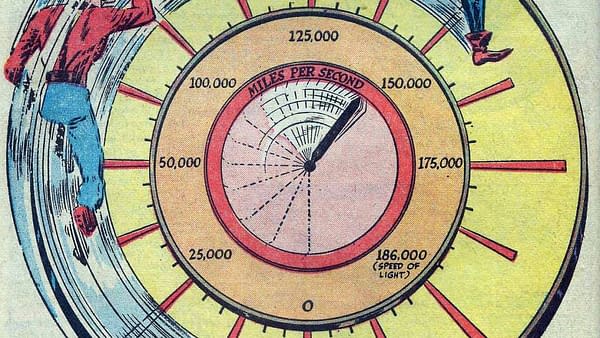
Like Batman #47 and Superman #53, Flash Comics #104's "origin retold" moment is in large measure a rewrite for a comics-reading audience that had gotten a lot more sophisticated since Superman was introduced in Action Comics #1 in 1938. Batman #47 and Superman #53 can be considered baby steps towards the continuity that became the hallmark of the Silver Age, and it's likely that Flash Comics #104 would be regarded in the same light if the title had survived.
That aside, this issue contains a clever pointer towards the inspiration behind the origins of the Flash. In his Jay Garrick alter-ego, Flash is reunited with the chemistry professor who oversaw the experiments that led to the "hard water" accident that gave the Flash his super-speed powers. This professor, Doctor Clariss, would become the Flash's super-speed rival and villain. But when they meet in their civilian identities, Jay tells him, "I'm anxious to hear more about your work with Uranium 235."
This clinches the notion that the "hard water" that gave the Flash his powers was actually inspired by "heavy water".
Heavy water is a form of water with a unique atomic structure and properties coveted for the production of nuclear power and weapons. Like ordinary water—H20—each molecule of heavy water contains two hydrogen atoms and one oxygen atom. The difference, though, lies in the hydrogen atoms. In ordinary water, each hydrogen atom has just a single proton in its nucleus. In heavy water, each hydrogen atom is indeed heavier, with a neutron as well as a proton in its nucleus. This isotope of hydrogen is called deuterium, and heavy water's more scientific name is deuterium oxide, abbreviated as D20.
As for the connection between heavy water and Uranium 235:
In its natural state, common uranium (U-238) can't generate destructive nuclear explosions. It either must be enriched—made more concentrated in a rare form of uranium (U-235)—or converted into plutonium (Pu-239). Heavy water can play a role in breeding weapons-grade plutonium from common uranium. In a heavy-water nuclear reactor, when neutrons bombard U-238, some uranium atoms absorb an additional neutron and are transformed into Pu-239.
Heavy water was popularly (and wildly) speculated to have a wide range of effects on living beings when Flash Comics #1 was written in 1939 — including significantly increasing the human lifespan. Given this in combination which its actual use in nuclear processes, it was a short leap for the scientifically-minded Gardner Fox to transmute such inspirations into super-speed abilities after Jay Garrick's accident at "Midwestern University". The addition of a device called an "atomic bombarder" into the plotline of Flash Comics #1 completes this picture. Around the time that Flash Comics #1 was being produced, scientists at the University of Illinois (certainly a Midwestern University) had produced an "electric atomic gun" to bombard heavy water with countless "atomic bullets".
The bullet-catching scene in the Flash Comics #1 story (and on its cover) could be viewed as a rather neat analogy for this development. And the introduction of Doctor Clariss in Flash Comics #104 ties this all together in a rather remarkable way.
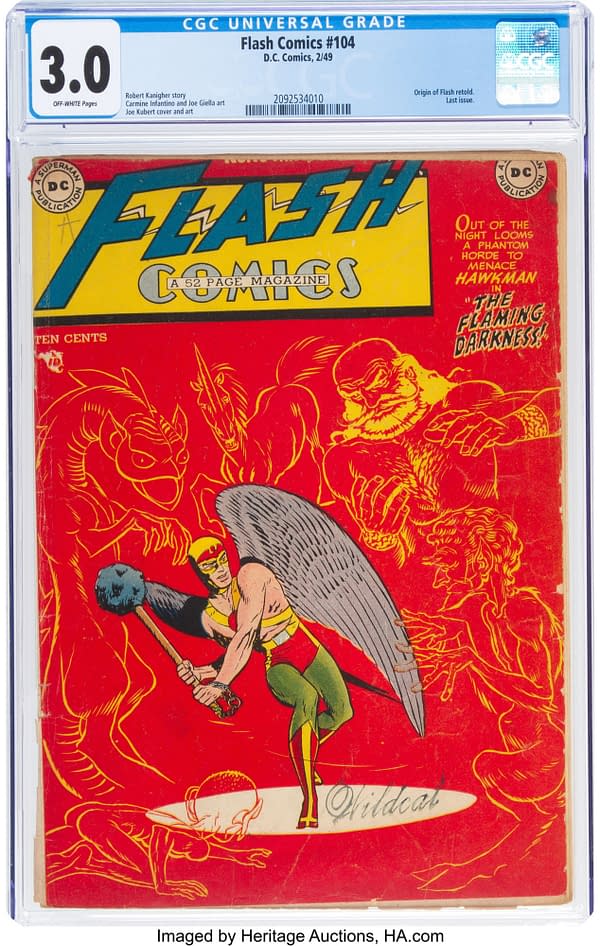
Flash Comics #104 (DC, 1949) CGC GD/VG 3.0 Off-white pages. Flash's origin is retold in this last issue of the title, which is listed as "scarce" by Overstreet. First appearance of the Rival Flash (Dr. Clariss). Hawkman cover and art by Joe Kubert. Art by Carmine Infantino, Arthur Peddy, Paul Reinman, and Bernard Sachs. Overstreet 2020 GD 2.0 value = $892; VG 4.0 value = $1,784. CGC census 9/20: 2 in 3.0, 30 higher.
You can register to bid for this copy of Flash Comics #104 up for auction in this week's 2020 September 10 – 13 Comics & Comic Art Signature Auction.













